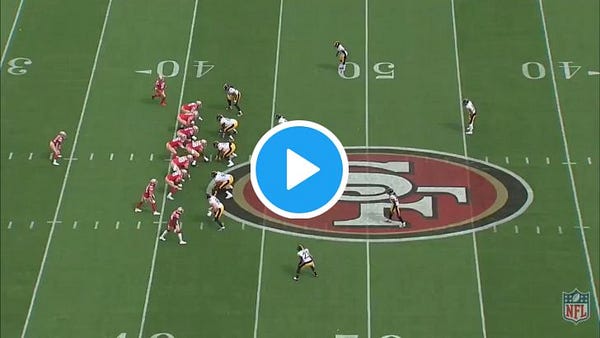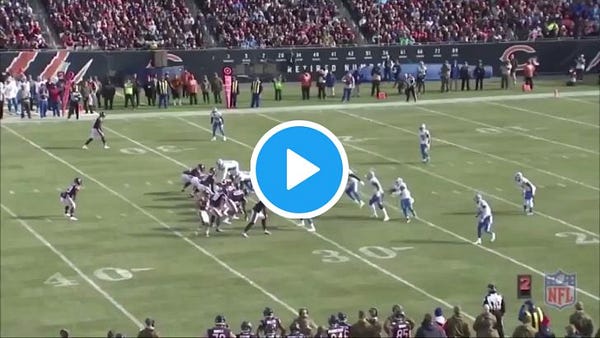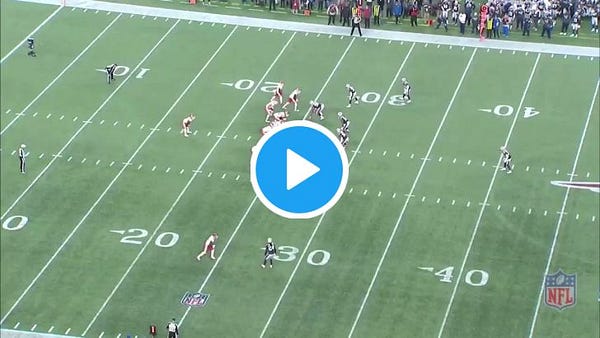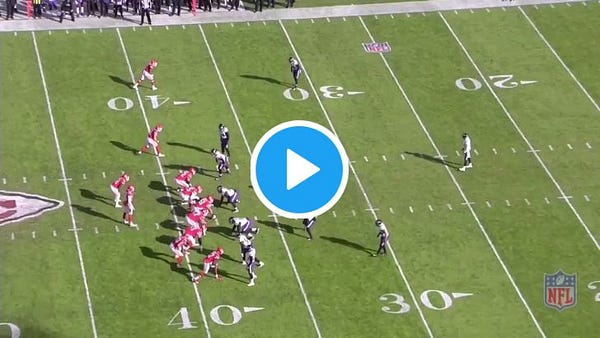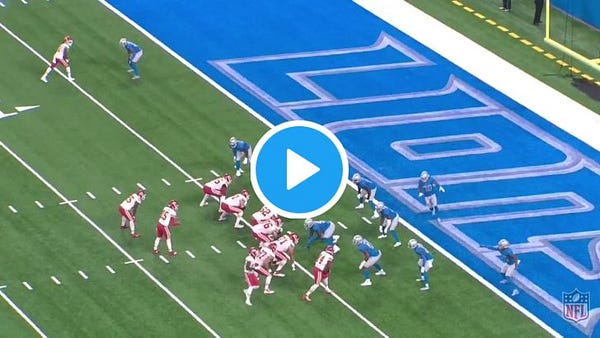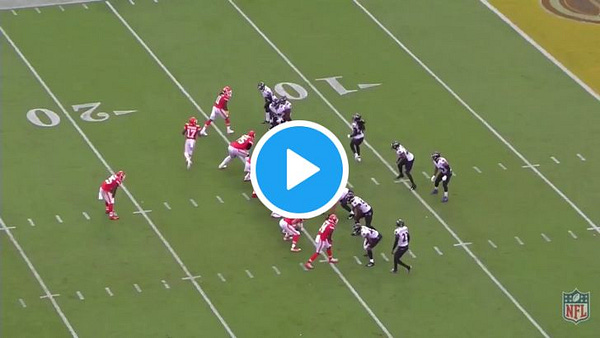The Chiefs’ Casper door screens
Even with Patrick Mahomes at quarterback, the Chiefs’ most effective concept were their screens to their tight ends and running backs. Even though their screen game in general was very successful, one type of screen was particularly effective, which I’ll call ‘Casper door’ screens. They averaged well over 10 yards a play when running these screens and of course never threw any interceptions on them.

The Chiefs’ success using these screens didn’t go unnoticed by the rest of the NFL as Kyle Shanahan installed the exact same play with the 49ers.

As mentioned in previous articles, the Bears have a similar offense to the Chiefs, so it’s not surprising that they ran it too.
The play is designed to be run from singleback but it can also be adjusted to work from shotgun. They always run it from a tight bunch with the Y off the ball. It’s necessary for him to be off the ball as he will slice/sift the backside end man on the line of scrimmage (BSEMLOS). The bunch is usually to the boundary, so it’s a formation into the boundary (FIB). The Chiefs have other concepts that they run from this formation.
The play consists of an inside zone strong slice/sift play fake and then another fake to a receiver in ghost motion. The Chiefs sometimes added an additional jet motion. When ran with jet the TE man blocks the DE rather than sifting him.
After faking the inside zone, the back pauses for a second and then releases to roughly around the numbers.

The example above shows a general idea of what the blocking looks like. The first linemen to disengage and release upfield is always either the PSG or the center, depending on which one was uncovered. His responsibility is to kick out the near defender. When facing man coverage it’s critical for him to identify and then reach (could be taught the same way as with OZ as the ball is designed to get the outside) the defender responsible for the back. This is usually the difference between a negative play and an explosive play. When facing zone coverage, his responsibility is to kick out the near defender, usually the apex.

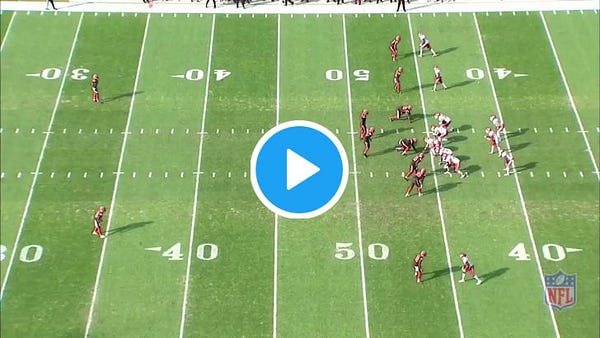
The PST is also very important as he’s responsible for containing the PSEMLOS. If he doesn’t contain him the play will likely be over before it can get started. He should be comfortable with the defender rushing up-field
If the center is the first to release then it’s usually the PSG’s responsibility to lead the running back up the numbers. He is responsible for ensuring the running back has space to the outside of the numbers to run through.
The BST is responsible for reaching the second defender in the vicinity of the screen. This is usually the hook defender (second defender inside the CB).
The BSG usually has to stay engaged until the ball is released so he is just responsible for walling off any underneath defenders.

The play above is a perfect example of the convoy the O-line is looking to create for the running back (things are a slight bit different as it’s the jet motion variation but the concept is the same): the uncovered PSG blocks the apex (like with OZ, he should look to run him towards the sideline if he can’t reach him), the center leads right up the middle, the uncovered BSG reaches the apex, the PST lets the PSEMLOS rush upfield, giving the running back lots of space to catch the ball.
Even with mediocre execution from the O-line, they still picked up 18 yards. That is the hallmark of an effective concept.
The following is another great example of how the PSG and center combine to kick out the first defender in the vicinity (around the top of the numbers), while also having lead blocker up the numbers. While, the BSG and BST combine to wall off any underneath defenders.
I think it’s a good example of how the kick out blocker (Center or PSG) should block the apex/force defender when he has heavy outside leverage(CB in this example as he’s a cloud CB). From what I know, it’s best to be patient when in a situation like that and let the back make you right, instead of committing to the outside and then have the defender beat you inside. I think the best teaching point would be to reach the defender (attack outside shoulder) if he’s inside, but attack his inside shoulder if he’s moderately outside, and when he’s a decent bit outside be patient while still focusing on his inside shoulder.
As mentioned earlier, the PST’s block is important as he needs to ensure that there’s space for the back to catch the ball and get upfield. If there’s no space for the back, the play is not necessarily blown up as there is the option to throw the ghost/orbit motion. This should only be used as a last resort.
This play also shows how it’s possible to run it from shotgun.
This is a cool change-up to the shotgun variation
Like all screens it’s especially effective against blitzes. In the following example the Chiefs get two blockers for one defender at the point of attack, which should always turn into an explosive play.
Even though the execution was only mediocre on average, and that the Chiefs didn’t have a dominant run game to sell the threat of run, it was still the most successful concept used by the best offense in the NFL. It’s rare to find a concept that combines a high probability of a chunk play (15-20 yards+) with almost no risk of a turnover.
Like Kyle Shanahan, if there’s one play to steal from the Chiefs’ offense, this is it as their talent didn’t influence their success much when running it.




